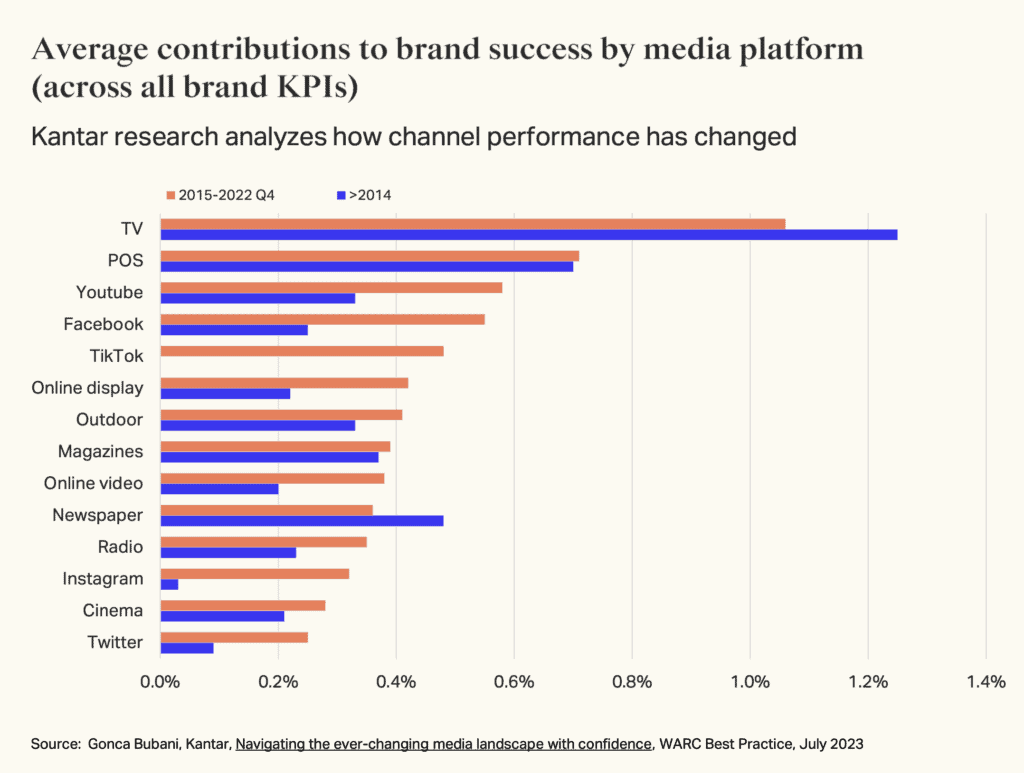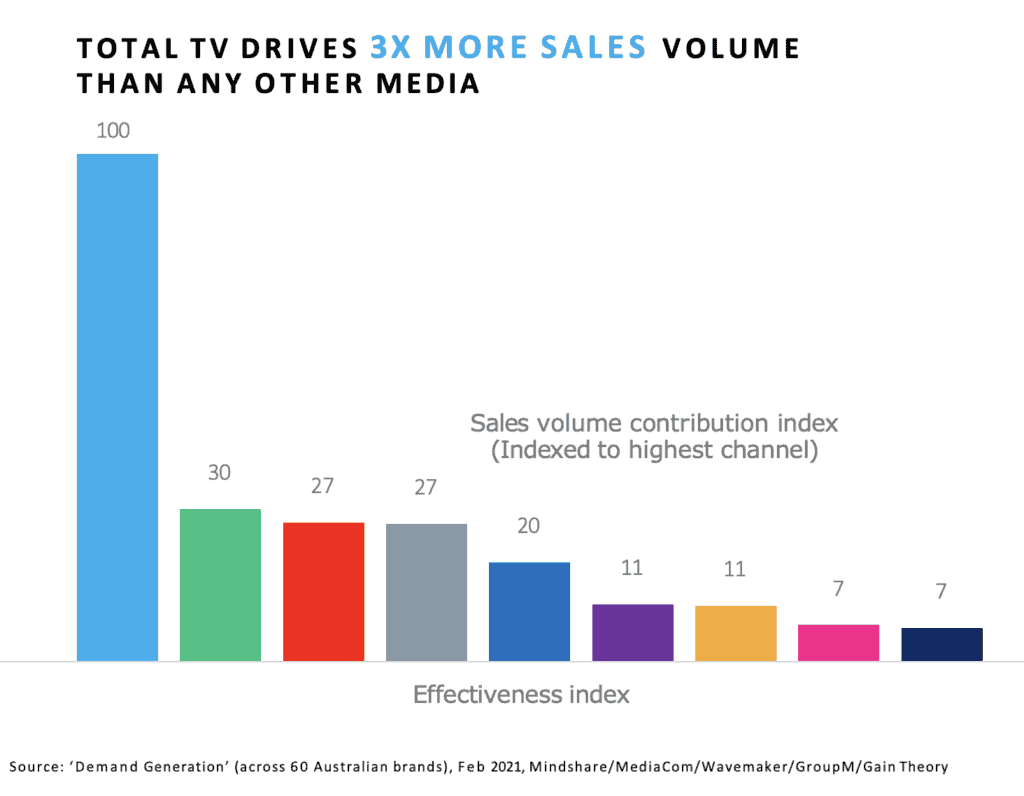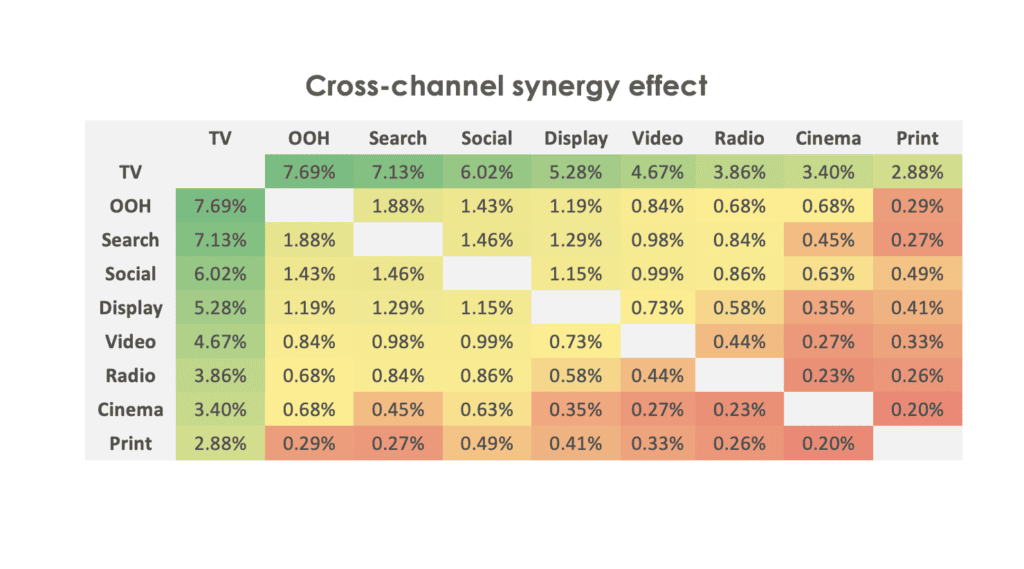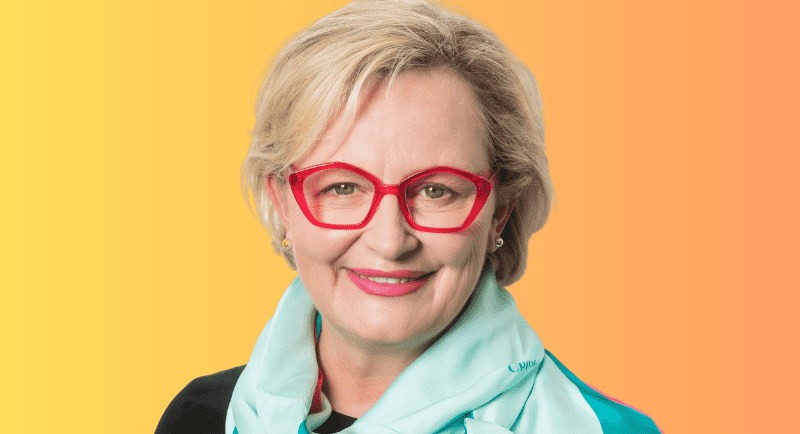Before you start switching up channel investment in your media mix, make sure you have all the facts. If not, you could be jeopardising the effectiveness of your campaigns, explains Kim Portrate, CEO, ThinkTV.
Cathy O’Connor’s comments that out-of-home revenue is set to grow at the expense of TV should send shivers up the spines of marketers (and their CFOs) everywhere.
Speaking to Mediaweek recently, the CEO of oOh! Media touted the growth of the outdoor sector noting that out-of-home is “a great companion to television.” And we wouldn’t argue with that.
However, suggesting advertisers can take spend from one channel and pour it into another is a dangerous notion given research has proven time and again that not all channels are equal. The facts show that simply swapping one channel for another will significantly reduce campaign effectiveness.
Granted, no brand buys just one media channel in isolation. But when it comes to selecting what goes into your channel mix, some mediums are stars whereas others work best as supporters.
In fact, research has shown that channels drive markedly different levels of demand.
Kantar makes it abundantly clear that OOH sits well below TV when it comes to contributing to brand success.

Meanwhile, the Demand Generation study shows OOH-heavy media mixes lead to a small percentage of media-driven sales compared to campaigns that upweight TV which see a much higher number of sales.

And even more interesting is what we call the multiplier effect. When you include TV in your media mix, it actually makes the other channels more effective as demonstrated by this chart.

So how does it do it?
For starters, TV has unbeatable scale and reach.
In any given week, Total TV reaches more than 19 million Australians. It uses the power of sight, sound and moving pictures to invoke emotions and research shows when you trigger people’s emotions, your ads get 2.4 times more sales.
TV also has attention in its corner.
Back in 2017, ThinkTV commissioned Karen Nelson-Field to run the very first attention study. We hypothesised that aligning advertising with premium video would provide a strong sales outcome for advertisers. And we weren’t wrong. From the intimacy of a small screen in your hand or the shared experience of a large screen in the living room, the research found Total TV generates striking levels of attention.
According to research shared by WARC, the same can’t be said for OOH. The study found the attention generated by OOH placements is influenced by location attributes such as distance from the road, size and length of ad visibility. Only once these requirements were optimally met did visual saliency become important.
Another study cited by WARC found OOH performs poorly in the short term and while it does better for long-term campaigns, that performance sits well behind TV and online video.
The research is clear. OOH simply isn’t a star channel. It needs to piggyback off a channel like TV.
With its high-velocity reach and ability to engage audiences, TV creates lasting memories and makes sure a brand is top of mind with the target audience. So, when they see a billboard or a digital ad, they’re already primed thanks to TV.
This is particularly true for brands looking to drive consumers to their website with a Canadian study finding the cost-per-visit driven by TV was almost twice as effective as OOH and significantly more effective than display advertising.
The grass isn’t always greener on the other side of the fence. If you want to get a quality profitable outcome, you need to invest in good-quality media.
Sure, you might be able to purchase more billboards or digital ads for the same spend you would invest in TV but just because you can get it for cheap, doesn’t mean it will deliver the same value – in the short or long term.
When you are buying media, you need to think about more than cost. Consider how a channel drives business and whether it can amplify the impact of others. That is its true value.
TV works harder than other channels and therefore it should be treated accordingly. That’s why we say it should be the first on and last off the plan.
If you’re thinking about reviewing your media investment, beware the outcome. Will the till ring as fast if you use a combination of media that doesn’t include TV? The research says no.
